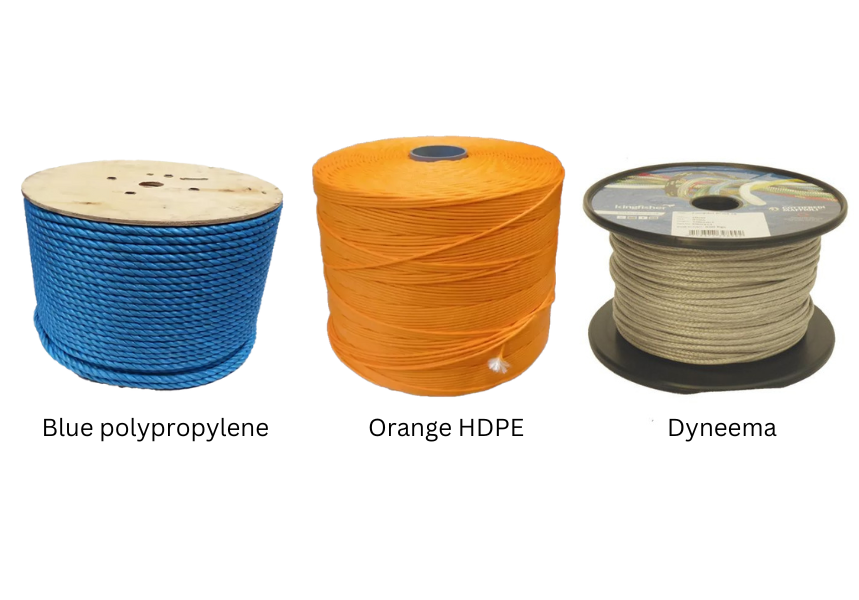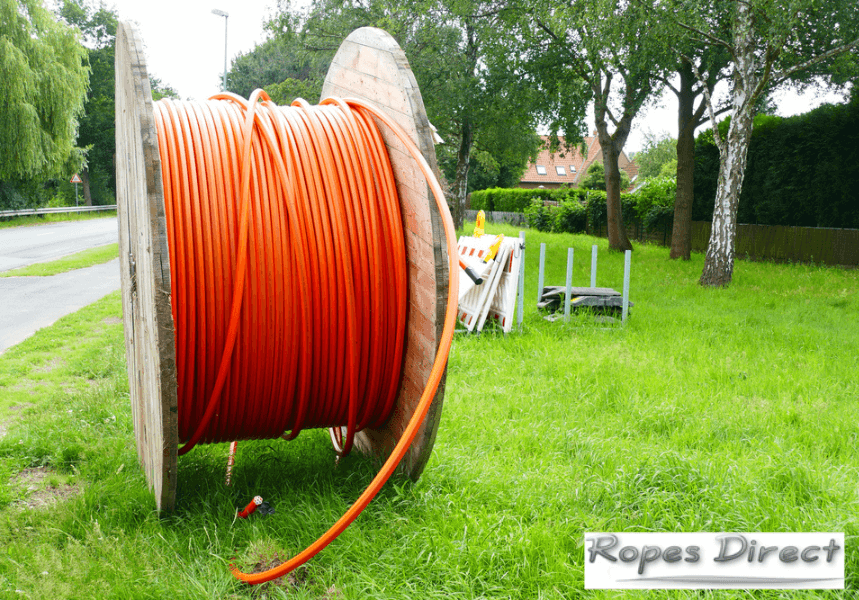Cables are rarely heeded by their users. Hidden underground, they can perform reliably for many decades, requiring little-to-no attention and generally going unnoticed. But only if they’ve been installed correctly.
The reality is, cable pulling is no easy feat – even for the most experienced of workers.
Throughout the delivery and installation process, it’s very easy for the cables to become damaged. And even simple issues can lead to a range of serious consequences – from a delay in your project’s completion and the need for extra resources to additional costs and customer dissatisfaction.
RopesDirect is by no means an expert in telecoms cable pulling. But we are a leading online supplier of high-quality draw cord and sub-duct ropes. And to help set our customers on the right track, here we’ve rounded up a few simple tips for a smooth, trouble-free cable installation.
Read on and improve your chances of first-attempt success.
5 tips for successful cable installation
- Check the condition of your cable pulling equipment
If your cable pulling tools are in good working order, this can greatly reduce the risk of any cable damage – particularly bends in the cable – and its associated safety hazards.
Prior to your installation date, be sure to examine the condition of your pulling cord, cable winch, cable roller, cable socks etc. If you notice any signs of deterioration or suspect that something isn’t working quite right, it may be worth contacting your supplier or investing in new equipment.
Here at RopesDirect, we can assist with the replacement of any defective pulling cords.
Having recently added several new lines to our range, we’re now home to one of the largest online collections of draw cord and sub-duct rope – with a product to suit all requirements.
Currently, we stock:
Available in 6mm-16mm diameters, on reels measuring from 450m to 1020m in length
- Orange HDPE Duct Rope
Including 6mm ropes on 4250m reels, and 6.9mm ropes on 500m reels
Sold in a range of widths from 2mm to 22mm, in 100m and 200m reels as standard. Longer reels can also be supplied upon request.
All of which are ideal for heavy-duty cable pulling applications. In fact, we now supply many large telecommunications companies throughout the country – providing high-quality draw cords, manufactured to the very highest standards, for an incredibly competitive price.

- Choose your cable supplier wisely
Successful handling of your cable starts with the supplier or wholesaler.
The manufacturer will typically deliver cables on an appropriately sized cable drum, which has been loaded under controlled factory conditions – helping to avoid any unnecessary damage.
However, having been cut to length, suppliers will often redrum the cable onto smaller ‘delivery drums’. And if the ‘delivery drum’ chosen is too small for the cable, it can result in both external scuffing and over-bending. Which is why, it’s always important to do your research.
Is the supplier an experienced and knowledgeable company? Do they have any online reviews? How will the cable be transported to your project site? Be sure to partner with someone you can trust.
- Remember to take heed of the cable’s parameters
Details of these can usually be found in the information sheets from the cable manufacturer.
Typically, they include:
- the safe temperature range of the cable
- its bending radius
- its maximum tension
- its weight
- the best way to store and cut it
Failure to adhere to the cable’s parameters can lead to a wide range of problematic damage, including everything from tears in the sheath and moisture to over-bending of the cable. So before you begin the installation, be sure to take a look and familiarise yourself with this information.
- Store your cable drums correctly
The cable and drum may look strong and resilient to wear and tear, but there are many ways in which they can become damaged during storage – therefore, certain rules need to be followed.
For example, if the cable has been stored inside, you should schedule a minimum 24-hour acclimatisation period before its installation. This will help to avoid the possibility of condensation build-up. If it’s stored outside, ensure the ground is as even and clean as possible.
The drum should also never be pushed along the ground on its flanges, as this can reduce its overall strength. Instead, store and transport the cable drum on both flanges – and always observe the rolling direction printed onto the drum. This will ensure the wound cable doesn’t become loose.
- Protect the ends
Missing or improperly sealed cable ends can very easily lead to moisture and water penetration. Therefore, following the installation, be sure to check that all cable ends are still intact.
Even if you can’t spot any visible or obvious signs of damage, it may still be worth applying plastic or rubber tape – especially if the cable will be subject to immersion or high levels of rain.
Order your new draw rope today
If you’re preparing for an important cable laying project and wish to invest in new high-quality pulling cords for the job, browse our full range and place your order today.
These are some of our best-selling products, particularly popular with cabling companies who are looking to buy in quantity. So we always have a large supply of stock in our warehouse and can offer a very quick turnaround – simply order by midday for next working day delivery!
Further information on our draw cords and sub-duct ropes can be found throughout our website, particularly in our previous blogs ‘Orange duct rope for cable pulling’ and ‘Why choose us for draw cord?’ – so if you’re still unsure, it’s worth checking these out.
We’re also always happy to help in any way that we can. We might not be telecoms experts or have detailed knowledge of successful cable pulling procedures, but we do have in-depth knowledge of all of our products. Whether you have a specific question about our draw ropes or would like advice on the best type and diameter for your requirements, please don’t hesitate to contact us.
Just send an email to info@ropesdirect.co.uk and we’ll respond as soon as possible.

